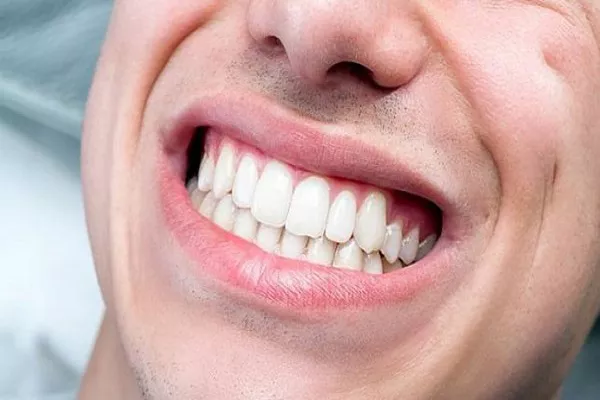In this article, we will explore the possibility of preserving teeth in individuals diagnosed with periodontal disease, a common and serious oral health condition that affects the gums and supporting structures of the teeth. Understanding the various stages of periodontal disease and the available treatment options will help patients make informed decisions about their dental health and potential tooth retention.
What is Periodontal Disease?
Periodontal disease, commonly known as gum disease, is an inflammatory condition that affects the gums and surrounding tissues supporting the teeth. The condition typically begins with the formation of plaque, a sticky film composed of bacteria and food particles, on the tooth surfaces. If not adequately removed through regular oral hygiene practices, plaque can harden into tartar, leading to irritation and infection of the gums. The initial stage of periodontal disease is known as gingivitis, which can progress to more advanced stages if left untreated.
The Stages of Periodontal Disease:
Gingivitis: Gingivitis is the earliest and mildest stage of periodontal disease. At this point, the gums become inflamed, appearing red, swollen, and prone to bleeding during brushing or flossing. Fortunately, gingivitis is reversible with timely and appropriate dental care, including professional cleanings and improved oral hygiene practices.
Periodontitis: If gingivitis is left untreated, it can progress to periodontitis. In this stage, the infection spreads below the gum line, causing the gums to pull away from the teeth, forming pockets that trap bacteria. As the bacteria multiply and the immune response intensifies, they start to break down the bone and connective tissues supporting the teeth. Periodontitis can lead to gum recession, bone loss, and potential tooth loss if not effectively managed.
Can Teeth Be Preserved with Periodontal Disease?
The possibility of preserving teeth in individuals with periodontal disease depends on various factors, including the severity of the condition, early detection, and prompt intervention. The primary goal of dental professionals in managing periodontal disease is to halt its progression and prevent further damage to the gums and supporting structures.
Early Detection and Intervention: Regular dental check-ups are essential for the early detection of periodontal disease. During dental examinations, the dentist will assess the health of the gums, measure pocket depths, and evaluate the level of bone support. Detecting periodontal disease at its early stages allows for timely intervention, which can significantly improve the chances of tooth retention.
Professional Scaling and Root Planing: For individuals with gingivitis or early-stage periodontitis, a non-surgical procedure called scaling and root planing may be recommended. This deep cleaning method removes plaque, tartar, and bacterial toxins from the tooth surfaces and beneath the gum line, promoting healing and reducing inflammation.
Periodontal Surgery: In cases of more advanced periodontitis, periodontal surgery may be necessary to remove deep-seated tartar and diseased tissue. The surgery aims to create a healthier environment for the gums to reattach to the teeth and reduce pocket depths.
Bone and Tissue Regeneration: In some cases, bone and tissue grafting procedures may be performed to regenerate lost bone and gum tissue, enhancing the support for the teeth.
Ongoing Periodontal Maintenance: Following any periodontal treatment, regular periodontal maintenance visits are essential for monitoring oral health, controlling bacterial growth, and preventing disease recurrence.
Factors Influencing Tooth Retention:
Severity of Periodontal Disease: The extent and severity of periodontal disease play a significant role in determining whether teeth can be preserved. Early intervention is crucial in preventing irreversible damage.
Individual Oral Health: A patient’s commitment to maintaining good oral hygiene practices at home and attending regular dental check-ups are vital factors in preserving teeth with periodontal disease.
Timely Treatment: Early diagnosis and prompt treatment are essential for successful management and the potential retention of teeth.
Response to Treatment: The effectiveness of periodontal treatment and the patient’s response to therapy will influence the outcome.
Conclusion:
Preserving teeth with periodontal disease is possible with early detection, timely intervention, and ongoing periodontal care. Gingivitis, the early stage of periodontal disease, can be reversed with proper dental care. In more advanced stages of periodontitis, various treatments such as scaling and root planing, periodontal surgery, and bone and tissue regeneration may be employed to halt disease progression and promote tooth retention.
Individuals diagnosed with periodontal disease must take an active role in maintaining good oral hygiene practices and attending regular dental check-ups. Early detection and prompt intervention are key to preventing further damage to the gums and supporting structures, enhancing the chances of preserving teeth in the presence of periodontal disease. By working closely with dental professionals and adopting a proactive approach to oral health, individuals can improve their chances of retaining their natural teeth and enjoying a healthy smile for years to come.
Related Topics:



























